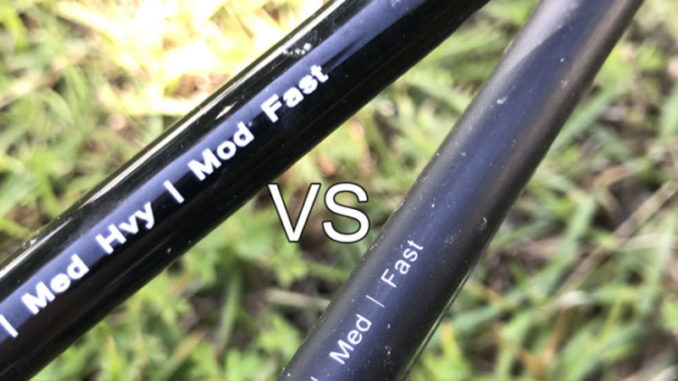
Action, power and rod length should all work together for maximum performance
You can’t go wrong when an experienced friend recommends a trusted brand, but over the years I’ve learned it’s easier to decide what’s best for me by learning the difference between rod length, power and action.
Knowing how these three are combined is key to getting the best rod for your specific application.
Now, I can’t dive into all those details, or the article would end up being thousands of words.
So let’s stick with the difference between moderate-fast and fast action rods, since utilizing just those two can pay big dividends for your next fishing trip.
What is a rod’s action?
The action of a fishing rod is defined by how much of the blank flexes when put under a load.
A “slow” action rod bends along the entire blank, whereas an “extra-fast” action rod bends only at the very tip.
A slow action is “slow” because the blank must cover a longer distance when returning from a flexed position.
So what’s the difference between moderate-fast and fast action blanks?
Fast actions are the status quo, being the “go-to” for inshore anglers, and are usually paired with medium-power and 6-foot-6-inch to 7-foot blanks.
They move faster than a moderate-fast (mod fast) action, tending to feel “stiffer” in the hand.
A mod fast blank is slower than a fast action, feeling somewhat softer.
I own several moderate-fast rods and they are definitely “whippy.”
Cast hard enough and you may smack the back of your head, as I did one day — leaving a nice welt from a ⅜-ounce jighead.
How are these used by inshore anglers?
A fast action is better for throwing artificial lures, like jigheads, topwaters and suspending hard baits.
And it works well with popping corks, too.
However, the moderate-fast blank really shines with live shrimp, a mainstay of Louisiana’s inshore anglers.
Have you ever had shrimp rip off your hook at the beginning of a cast? If so, look at your rod’s action and you may be surprised to see it’s fast.
A moderate-fast action is softer on shrimp, creating a gradual acceleration when the rod is loaded, rather than a sharp and sudden change in inertia that rips the hook out.
Conclusion
Fishing rods are like cars: there are different models for different purposes.
A minivan is great for kids, and a sports car is better for going fast and looking cool.
But you can’t fit all your kids in a Corvette, and you’ll never do well with the ladies driving a minivan.
It’s the same for fishing rods, with each power/action/length combo serving a different purpose.
You may find a moderate-fast rod does better chunking live shrimp, saving your dollars and putting more fish in the boat.
Thanks for reading, and if you liked this article then you’ll love my website, Louisiana Fishing Blog.


